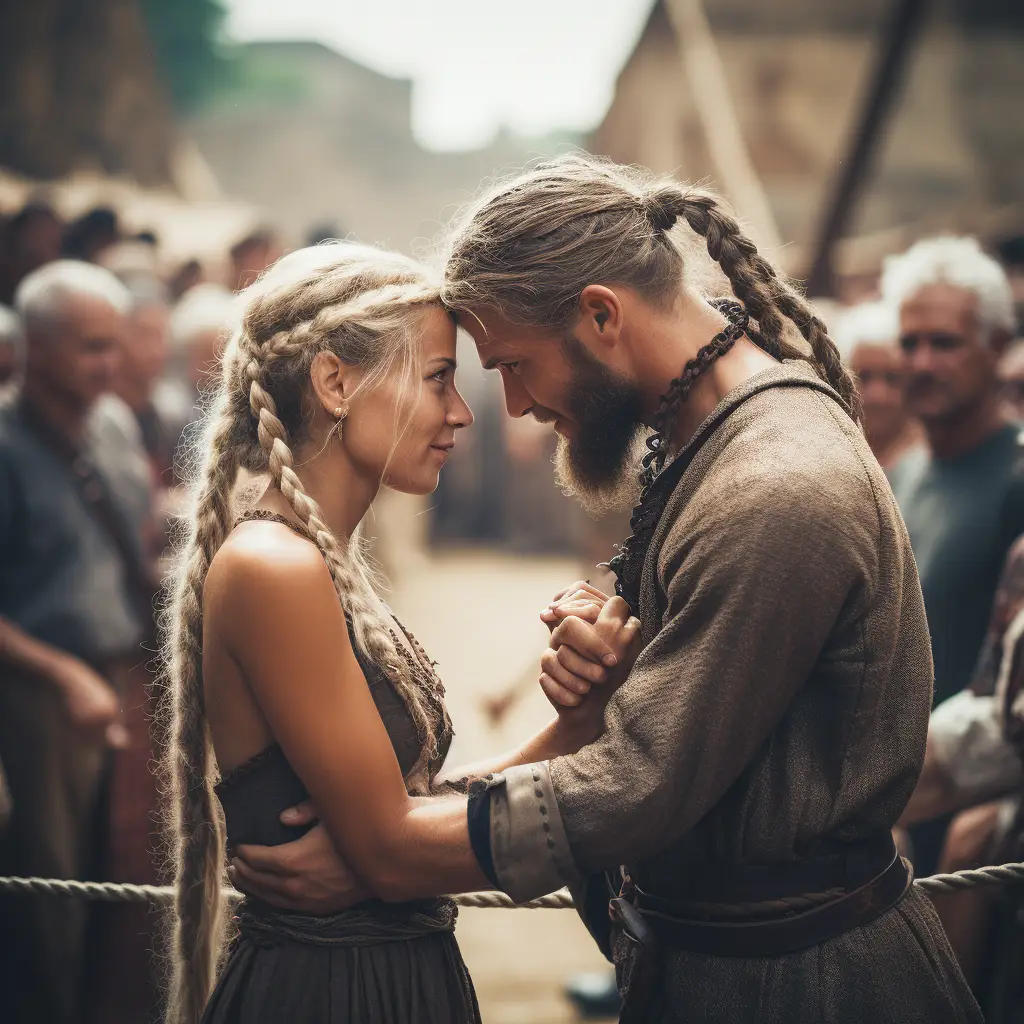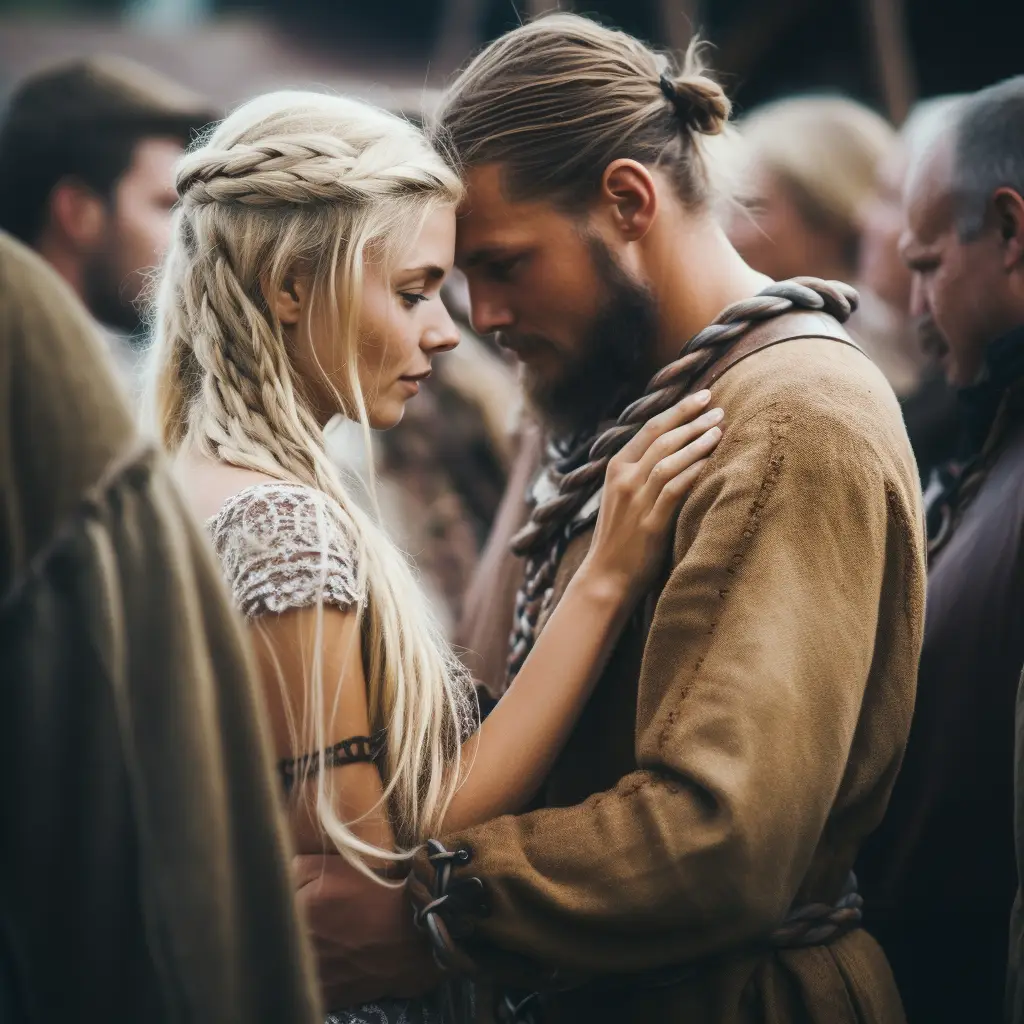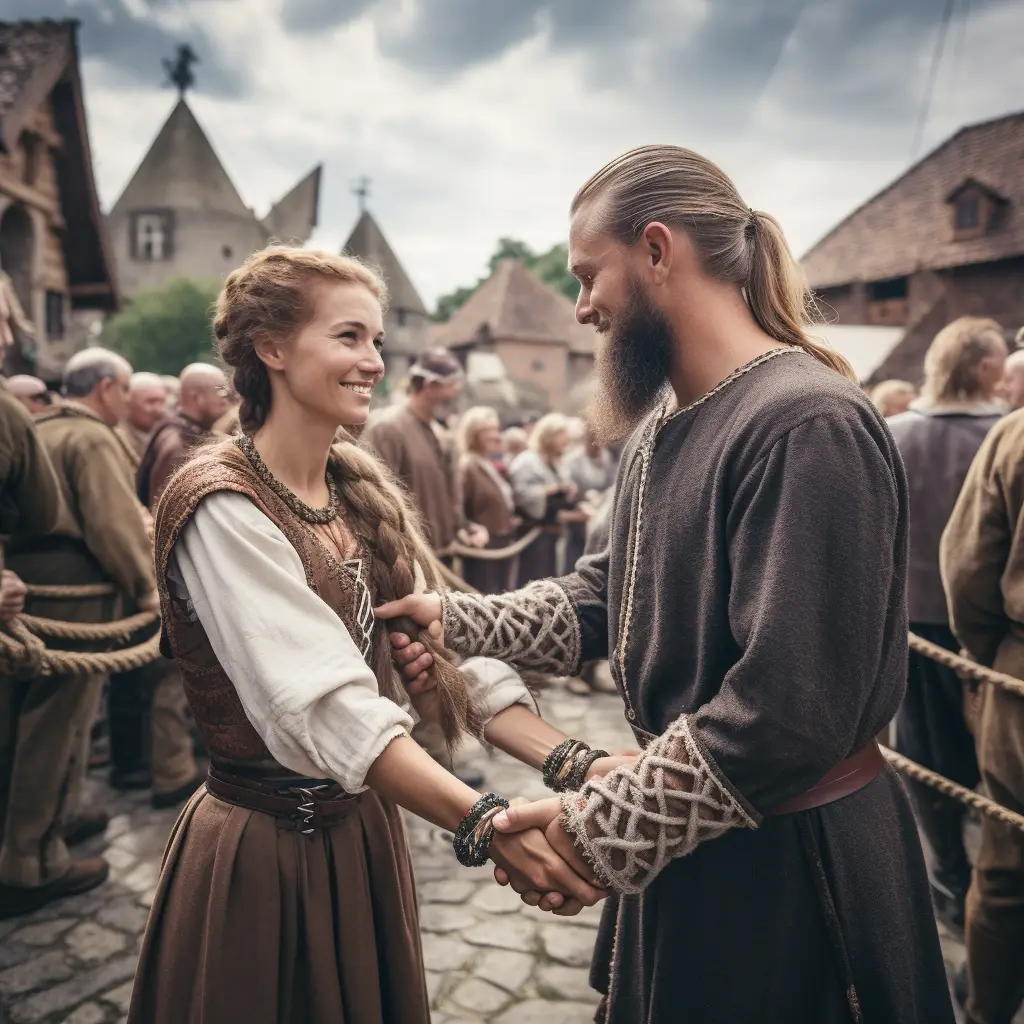A Viking wedding, also known as a Norse wedding or a Viking handfasting ceremony, would have been a significant and symbolic event in Norse culture. While historical records of Viking wedding rituals are scarce, historians and archaeologists have pieced together some insights into how these ceremonies may have been conducted based on sagas, poetry, and archaeological findings.
Here’s an imagined portrayal of what a Viking wedding might have entailed:
Preparation: Before the wedding, both families would likely engage in preparations, which could include feasting, making elaborate decorations, and crafting special attire for the bride and groom.
Location: The wedding might have taken place outdoors, perhaps in a natural setting such as a grove, by a river, or on a hilltop, connecting the ceremony with the natural world that was deeply revered in Norse culture.
Guests: Family members, friends, and members of the community would gather to witness and celebrate the union. Hospitality would be extended to all guests, with feasting and merriment to mark the occasion.
Ceremony: The ceremony itself might have involved various rituals and symbolic acts. One common custom could have been the exchange of gifts between the families as a gesture of goodwill and alliance. The bride and groom might also exchange vows, pledging their commitment to each other.
Handfasting: A central aspect of the ceremony may have been the handfasting ritual, where the couple’s hands were bound together with cords or ribbons, symbolizing their union and the tying of their fates. This ritual is where the term “handfasting” originates.
Feasting and Celebration: Following the ceremony, a lavish feast would likely be held, featuring abundant food, drink, music, and dancing. This celebration would continue long into the night, fostering bonds between the families and the community.
Blessings and Wishes: Throughout the wedding festivities, blessings and well-wishes would be bestowed upon the newlyweds, with hopes for prosperity, fertility, and happiness in their marriage.
While this portrayal is based on historical and cultural insights, it’s important to note that Viking weddings would have varied depending on factors such as region, social status, and personal preferences. Nonetheless, the spirit of love, unity, and celebration would have been central to these ancient ceremonies.



